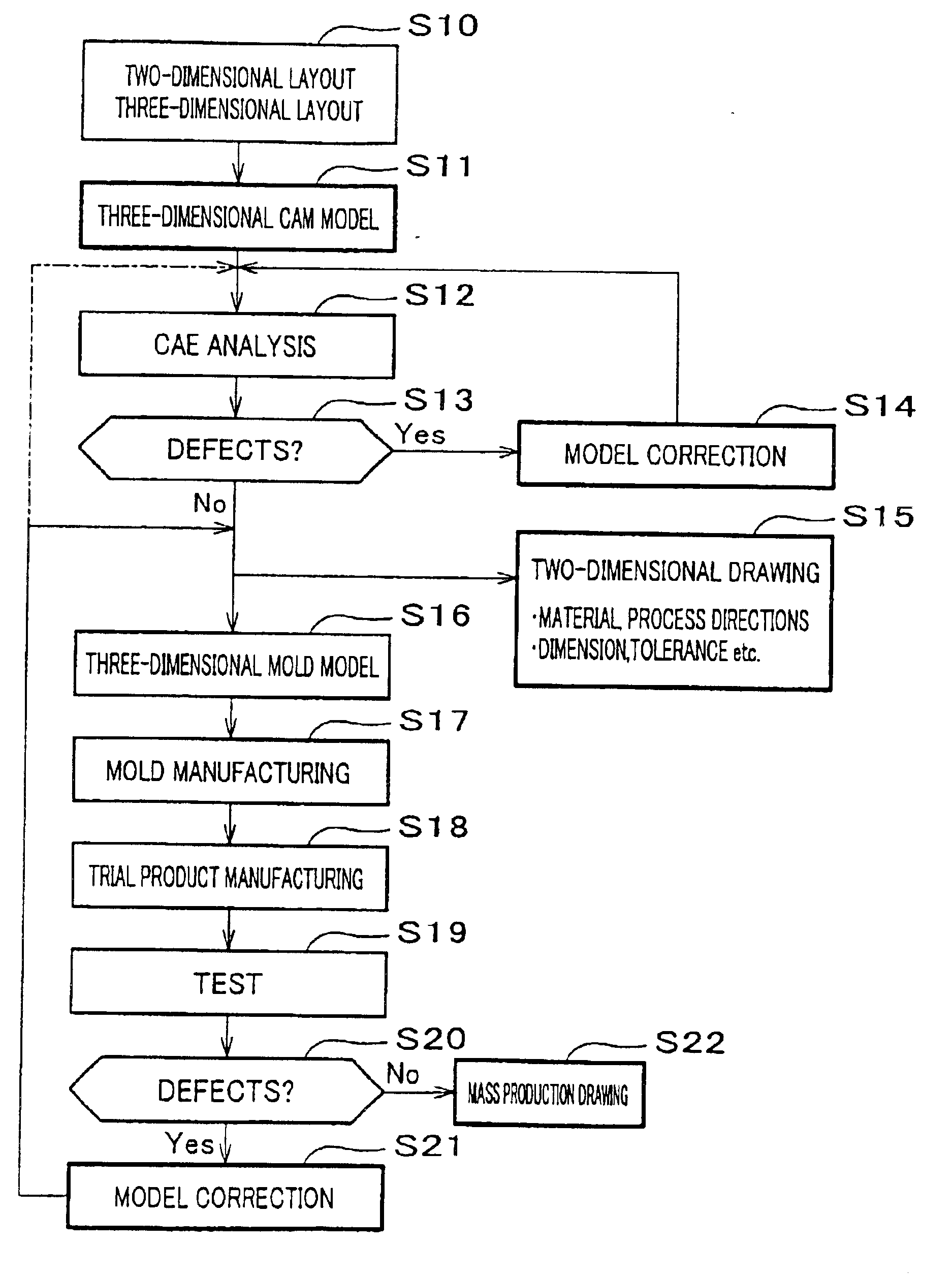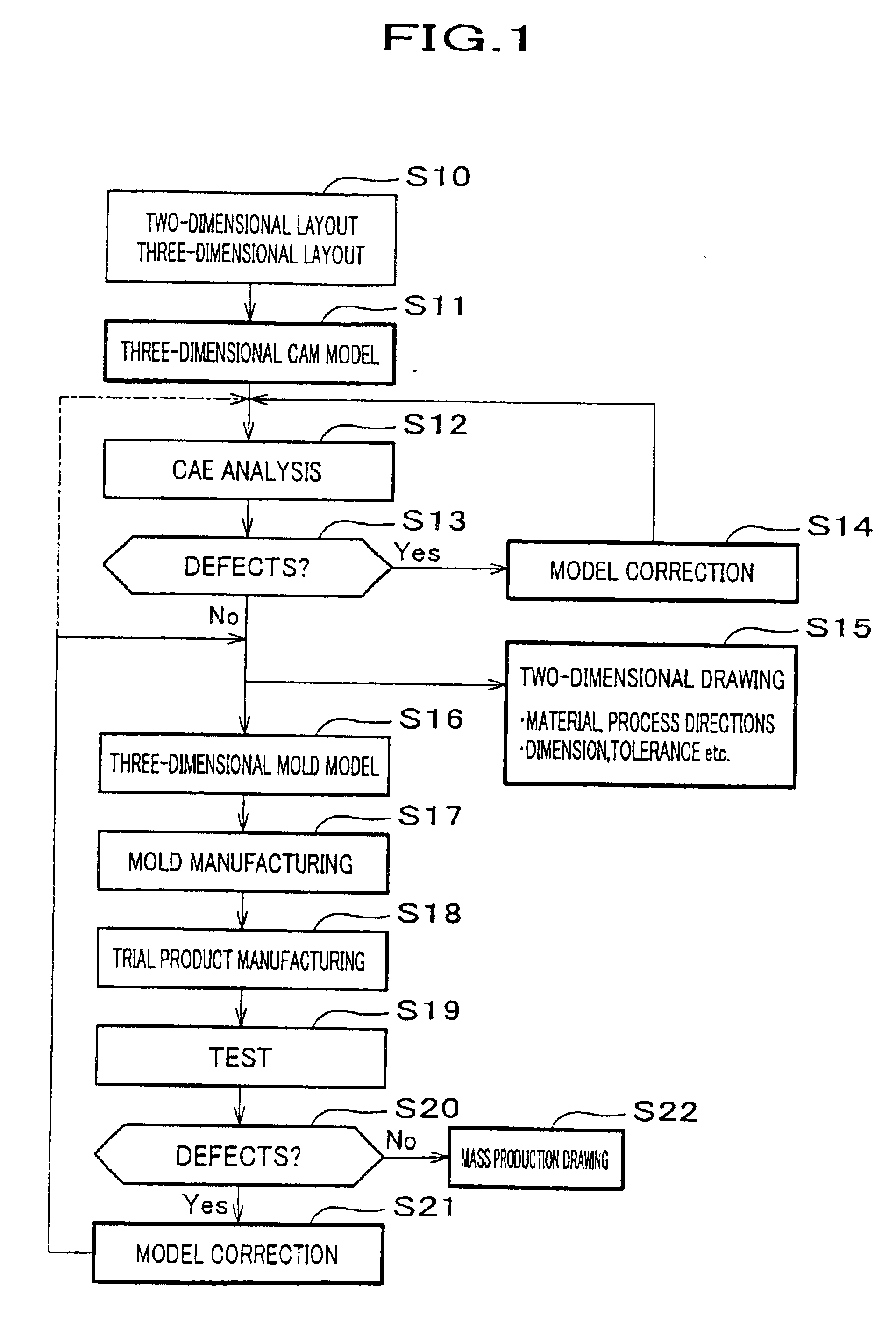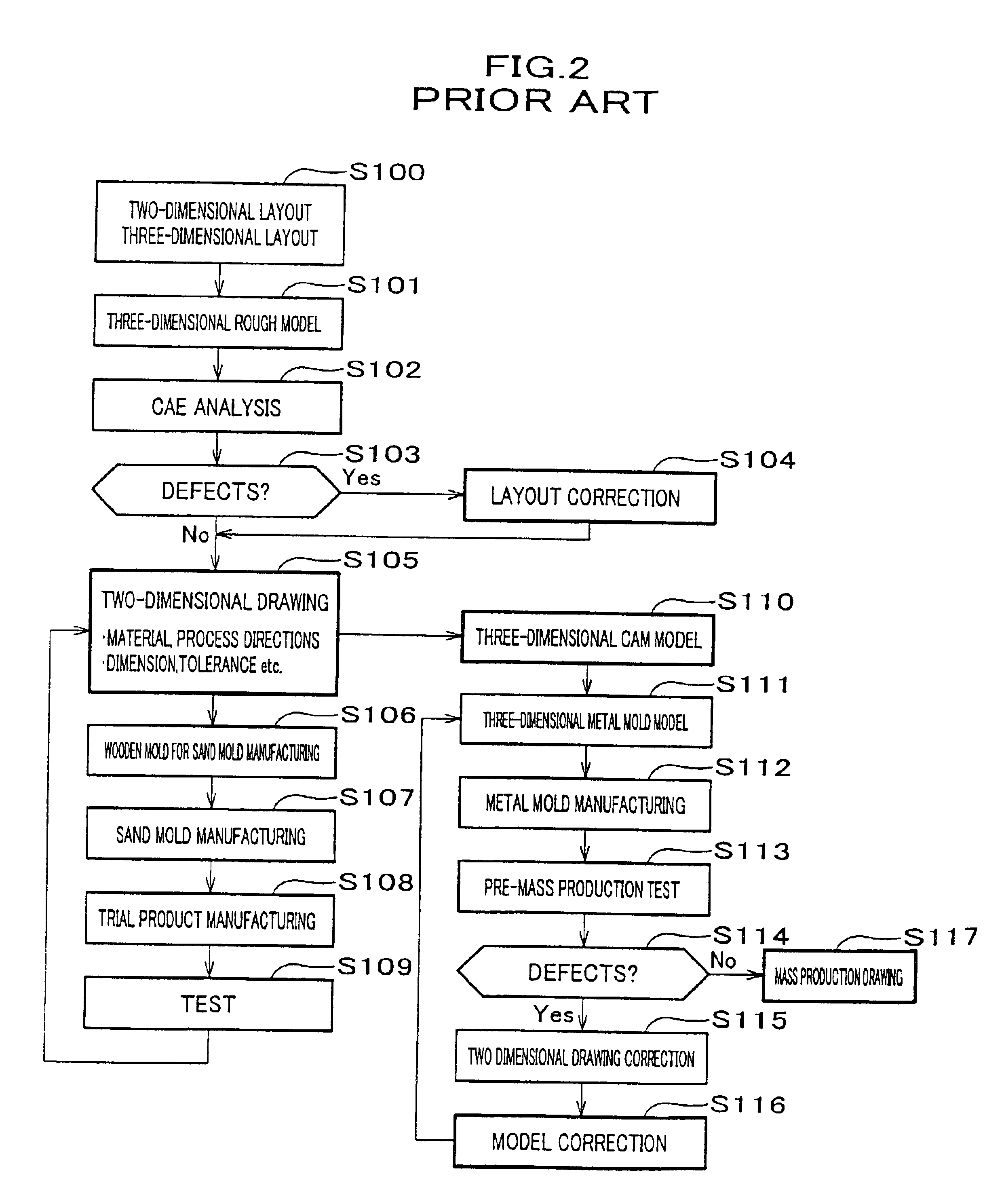Method of designing product using 3-dimensional model
a technology of three-dimensional models and products, applied in the direction of total factory control, programme control, instruments, etc., can solve the problems of large development time and trial cost, development time, and the inability to apply the three-dimensional model of rough models to the machining data for mold manufacturing, so as to reduce the man-hour of manufacturing and the effect of tes
- Summary
- Abstract
- Description
- Claims
- Application Information
AI Technical Summary
Benefits of technology
Problems solved by technology
Method used
Image
Examples
Embodiment Construction
[0022]The preferred embodiment of the present invention will now be described in detail below.
[0023]FIG. 1 is a flow diagram describing a design method of a product with three-dimensional model.
[0024]A designer prepares two-dimensional layout drawings or a three dimensional layout model with a three-dimensional CAD system (S10). He then makes a three dimensional CAM model for each part or some parts in the three-dimensional CAD system (S11) and performs the CAE analysis for it (S12). The stress analysis for the three dimensional CAM model is conveniently performed in the three-dimensional CAD system, which has been developed recently. An expert on CAE analysis used to prepare a meshed model appropriate for the shape of each part and perform the calculation and post-calculation displaying process. Now dividing a complex shape like a three-dimensional CAM model into meshes, the calculation and the post-calculation displaying process can be performed automatically. Therefore, an expert...
PUM
 Login to View More
Login to View More Abstract
Description
Claims
Application Information
 Login to View More
Login to View More - R&D
- Intellectual Property
- Life Sciences
- Materials
- Tech Scout
- Unparalleled Data Quality
- Higher Quality Content
- 60% Fewer Hallucinations
Browse by: Latest US Patents, China's latest patents, Technical Efficacy Thesaurus, Application Domain, Technology Topic, Popular Technical Reports.
© 2025 PatSnap. All rights reserved.Legal|Privacy policy|Modern Slavery Act Transparency Statement|Sitemap|About US| Contact US: help@patsnap.com



